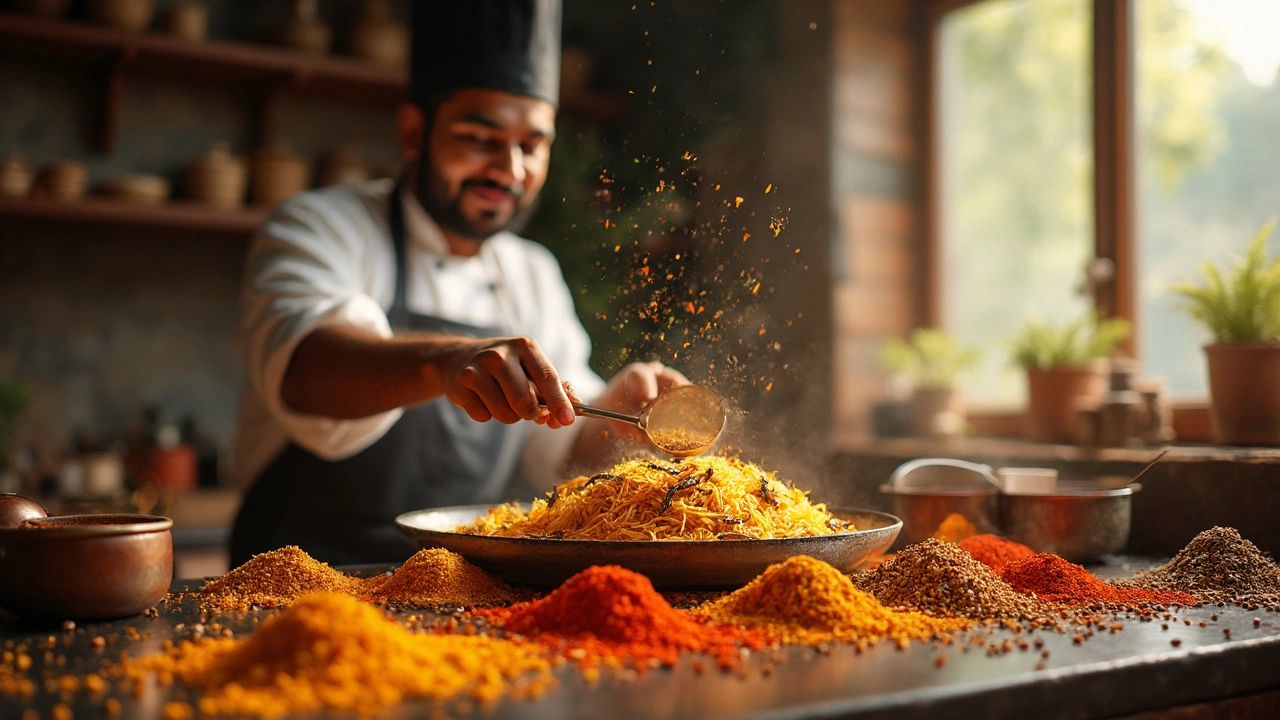Biryani Bitterness: Taming the Bitter Edge in Your Biryani
When working with biryani bitterness, the unwelcome bitter notes that sometimes appear in a biryani due to over‑roasted spices, burnt aromatics, or scorched rice. Also known as biryani’s bitter edge, it signals a need for better flavor balance. The classic dish Biryani, a layered rice and meat casserole celebrated across India relies on harmony, not harshness.
One of the biggest culprits is the spice blend. When whole spices like cumin, coriander, or bay leaf stay in a hot pan too long, their natural oils oxidize, turning sharp and bitter. This Spices, the aromatic powerhouses that give biryani its signature aroma should be toasted just until fragrant, never blackened. Over‑roasting also destroys the delicate sweet notes of cardamom and clove, leaving a flat, harsh finish.
Rice, the backbone of any biryani, can add bitterness if it touches the pan’s scorching bottom. Scorched grains release a burnt flavor that spreads through every layer. Using a heavy‑bottomed pot and pre‑soaking the rice for 30 minutes reduces this risk. Proper heat control ensures the rice cooks evenly without sticking, keeping the texture Rice, long‑grain basmati prized for its fluffiness and aroma light and fragrant.
Acidity is the secret weapon against bitterness. A splash of Lemon, fresh lemon juice that adds bright sour notes or a dollop of yogurt can cut sharp edges and lift the overall flavor profile. The acidic component balances the oil‑rich ghee and the deep spices, making the dish feel fresh rather than heavy.
Beyond lemon, other balancing agents work wonders. A spoonful of plain yogurt or a few grated tomatoes introduces mild acidity and a hint of sweetness. Adding a pinch of sugar can also neutralize bitterness without making the biryani sweet. These tweaks adjust the pH just enough to keep the palate happy.
The cooking method matters, too. Traditional "dum" (steam) cooking lets flavors meld slowly, preventing any single ingredient from dominating. Layer the rice over the marinated meat, cover tightly, and cook on low heat. This gentle approach lets the spices release their aroma gradually, reducing the chance of bitter burst.
Equipment plays a subtle role. A thick‑bottomed Dutch oven or a seasoned handi distributes heat evenly, avoiding hot spots where spices or rice can scorch. If you must use a thin pan, keep the flame low and stir frequently during the initial tempering stage.
Many home cooks think adding extra ghee will mask bitterness, but fat alone can amplify the harsh notes if the root cause isn’t addressed. Instead, focus on correcting the source—spice timing, rice handling, and acidity—then finish with a modest drizzle of ghee for richness.
Regional styles showcase how bitterness is handled differently. Hyderabadi biryani often uses fried onions and a touch of saffron, both of which add sweetness that counters bitterness. Lucknowi (Awadhi) biryani relies on a delicate balance of spices and a cooler cooking temperature, naturally minimizing bitter outcomes. Understanding these variations helps you choose the right technique for your preferred style.
If you’re battling biryani bitterness, the tips above give you a clear roadmap: toast spices briefly, protect the rice, add a dash of lemon or yogurt, and cook low and slow. Below, you’ll find a curated collection of articles that dive deeper into each of these points, from why lemon brightens biryani to secret ingredients that boost flavor without adding bitterness. Explore the list to fine‑tune your next biryani masterpiece.

What Causes Bitterness in Biryani?
Biryani is known for its aromatic blend of flavors, but sometimes an unexpected bitter taste can ruin this beloved dish. The usual culprits are overcooked or burnt spices, especially cloves, cumin seeds, or certain masalas. Identifying and rectifying these can help ensure a smooth, flavorful experience. Understanding the role of each ingredient and timing helps in mastering the perfect blend.